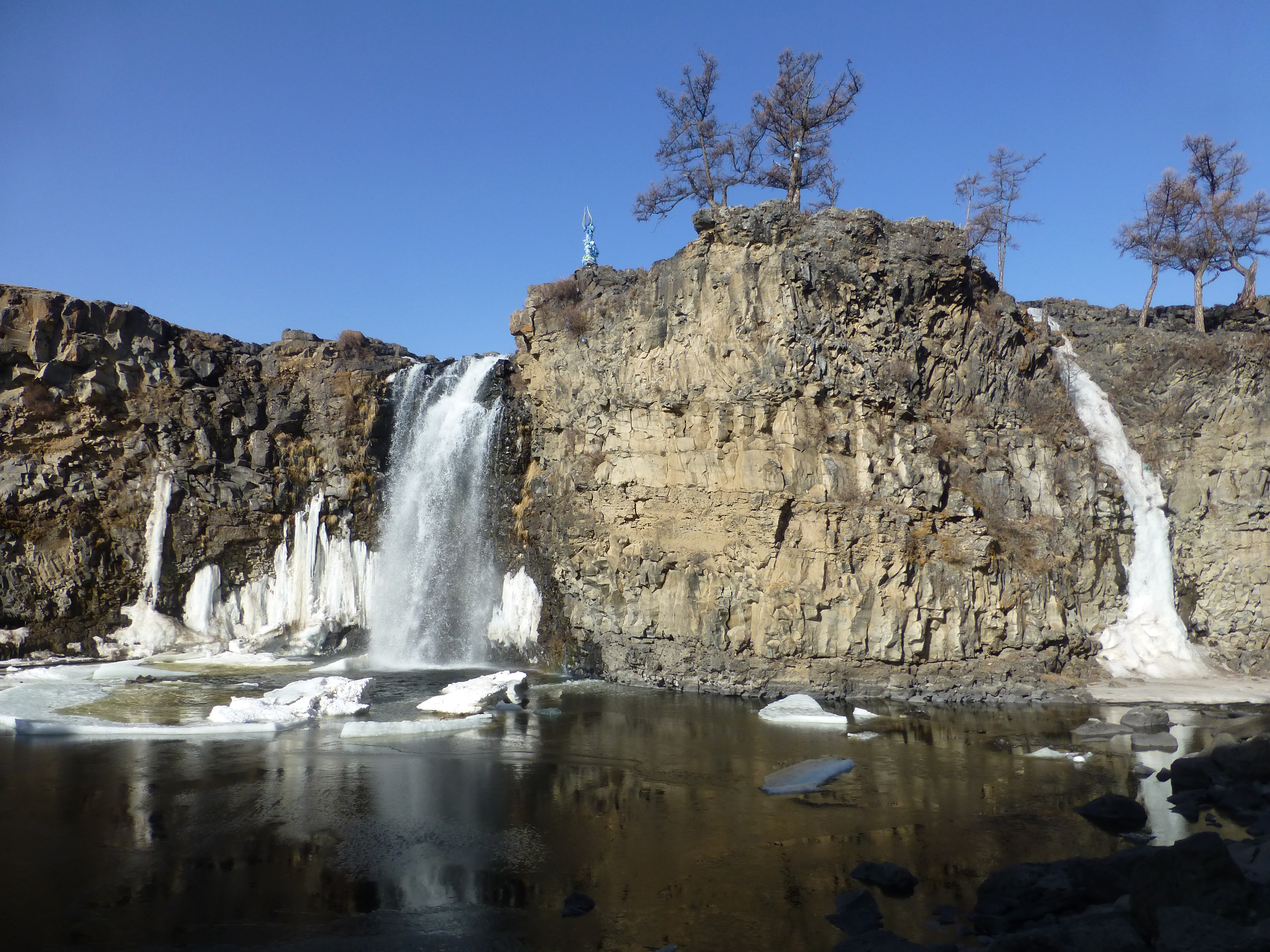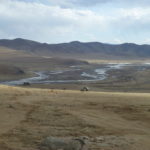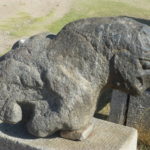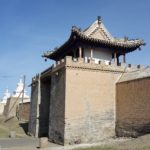In brief: Over millennia, the valley has nurtured life, empires, art and religion – and seen its share of death and destruction as well.
The Orkhon River Valley is the UNESCO-recognized cradle of Mongolian – and much of Asian – civilization. But it has seen much decline as well.
Throughout the valley, one can still find remnants of early humans who thrived from the Paleolithic age through the Bronze age and beyond. The burial sites of these Bronzians, large stone slabs forming what looked to us like super-sized beds, can be found throughout the valley. Orkhon’s attraction for these early residents, and for today’s Mongolians, consisted of the essentials for themselves and their livelihood: both plentiful water in a dry land as well as a rich volcanic soil where grasses flourished for animals.
The valley is still replete with sizable farming towns. Abundant herds of cattle, goats and sheep roam about, steered as needed by adept horsemen. But this is life on the edge. Many animals don’t survive the long, harsh winters or the predators also attracted to the bounty. These two forces cull the weakest of the animals. So, amid the survivors, many carcasses and skeletons pile up by the spring.
The beauty of Orkhon’s sweeping landscape overwhelmed us even at winter’s end – before the abundant green fills the valley. Low mountains line the flood plain which glows with nourishing soil. In some places, the waters sprawl at will over the flat land; in others, the river has gouged 100 meter high canyons as channels. Wildlife flourishes around the flowing waters.
The valley was a natural location for Chinggis (or Genghis) Khan to found Kharkhorin in 1220 as the capital of his vast Mongolian empire. Soon that empire stretched outward from Orkhon as far as the Great Wall of China and the Middle East. The walled city here became one of the largest and most important in the world.
But then it too fell, largely because Chinggis’ grandson, Kublai Khan, shifted the capital to Beijing. Mongolian control dwindled and cracked, even as the life of the farmers and ranchers here continued on the fertile soil.
Later, the Orkhon nurtured the spiritual life of the country. By the 16th century, what remained of Kharkorin was pillaged for stones to build a grand monastery in its place. Erdenezuu Monastery eventually comprised over 500 buildings by the early 20th century. By the 17th century, up in the low mountains near Kharkorin, monk and artist Zanabazar introduced the Tibetan school of Buddhism to Mongolia. In contrast to Erdenezuu, his monastery Tukhvun consisted of just a few buildings tucked in the crevices of a rocky peak amid the forests high above the Orkhon Valley. It became a center for meditation and religious art whose influence spread far, transforming the practice of Buddhism here.
Yet, by 1937, Tukhvun was in ruins and only three of Erdenezuu’s 500 buildings remained. Russian Communist leaders had ordered their destruction, along with most of Mongolia’s myriad other monasteries, in their drive to crush religious practice here.
In the last few decades, Tukhvun has been revived. Erdenezuu has restored its school and practices Zanabazar’s religion once again. Meanwhile, the valley nourishes animal life as it always has and spiritual life once again.
(Also, for more pictures from Mongolia, CLICK HERE to view the slideshow at the end of the itinerary page.)














